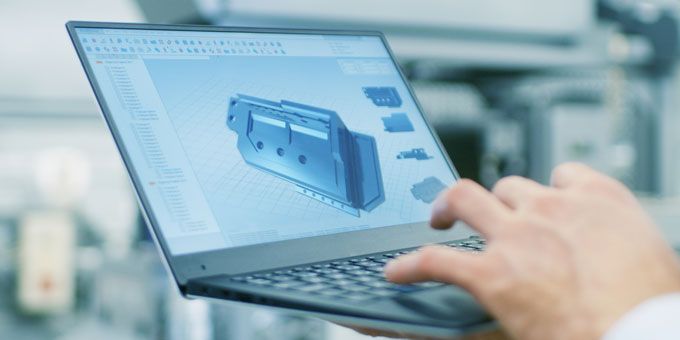The software used for computer-aided design (CAD) has significantly changed how manufacturers complete their projects and meet client needs. Here's a look at some changes this evolution caused:
 How CAD Software Is Evolving for Manufacturers
How CAD Software Is Evolving for Manufacturers

Emily Folk | Conservation Folks
It's Allowing Them to Avoid Downtime
Some elements of CAD software enable users to see real-time status updates for all relevant equipment. Then, manufacturing employees can get information that could reveal if something's amiss with a particular machine or process. Recent surveys showed that upgrading to smart machines that can self-diagnose problems was an investment priority for manufacturers in 2019.
Besides limiting production stoppages for manufacturers, CAD software with digital "health" metrics for machines facilitates seeing which pieces of equipment are most efficient. Then, it's easier for companies to make confident decisions about which ones are worth future investments and which ones to phase out. Once manufacturers calculate the average time between equipment failures, they'll be more able to plan for and avoid downtime.
It's Boosting Their Efficiency
When manufacturers become more efficient, they have a higher likelihood of meeting client needs while avoiding mishaps. An Irish furniture design company called BSG Design started incorporating CAD into their workflows when communicating with clients and carrying out their requests. A representative from the enterprise reports that CAD and the respective programs doubled the size of the business due to the increased efficiency offered.
One of the CAD programs used by the company communicates engineering data directly to one of the machines responsible for parts of of furniture production. The company also depends on software to change the different construction methods used to meet various customer requirements. Being able to switch between them as needed helps the enterprise avoid delays. That's especially true as they work on pieces back to back that have distinctly different requirements.
It's Facilitating More Customization
In the early days of CAD software, companies invested in options that had plenty of features but were not easy to customize. Since such customization was difficult or impossible, manufacturers faced restrictions when trying to tweak things to meet client specifications. Now, CAD software offers a wide assortment of customization options that promote cost-effectiveness, personalization and quality assurance.
Another trend that goes along with access to customization is that more CAD options exist in the cloud. Manufacturers can subscribe to base software plans in the cloud and pay for new features that instantly appear when they need or want them.
The evolution of cloud-hosted options in CAD software also makes it easier for designers to collaborate with each other from wherever they are. Then, if an in-house team member can't take care of a customization request that a client wants, they can give the responsibility to someone who works elsewhere such as a remote freelancer in another state or country.
It's Helping Manufacturers Embrace New Technologies
Manufacturers know that staying competitive means understanding how other technologies could support CAD and enhance their workflows. When companies can effectively use other technologies along with CAD, they're well-equipped to progress into the future. One of the most important changes that CAD evolution has brought about is the compatibility with other technologies.
For example, BMW recently built a pilot plant for building its planned fully electric vehicle. The company will use a scanner to check the surfaces of car parts and compare them with CAD models of the components. BMW will also use CAD models with an augmented reality (AR) app that checks the bolts on assembled vehicles.
Then, at MIT, researchers developed a couple of ways to make CAD options better with artificial intelligence (AI) and machine learning. Surprisingly, the applications in that instance relate to a type of manufactured product that some may not expect: Knitted garments. One of the inventions involves a system where a person can take a picture of a pattern and send that image data directly to the machine that makes the product.
The MIT team envisions a time when even hobbyists or people without extensive knitting experience could make complicated patterns without hassles. For now, though, one of the aims is to streamline the manufacturing process and by changing the method of programming the knitting machines for the garments.
A Bright and Exciting Future
This overview shows that CAD manufacturing has significantly evolved, and the evolution is still happening. As such, the entities that work with CAD software need to stay abreast of these developments and how the changes could help them. Using CAD software in a different way than usual requires time for companies to adjust. But, the results often pay off in ways that help businesses succeed and keep clients happy.
The content & opinions in this article are the author’s and do not necessarily represent the views of ManufacturingTomorrow
Comments (0)
This post does not have any comments. Be the first to leave a comment below.
Featured Product

